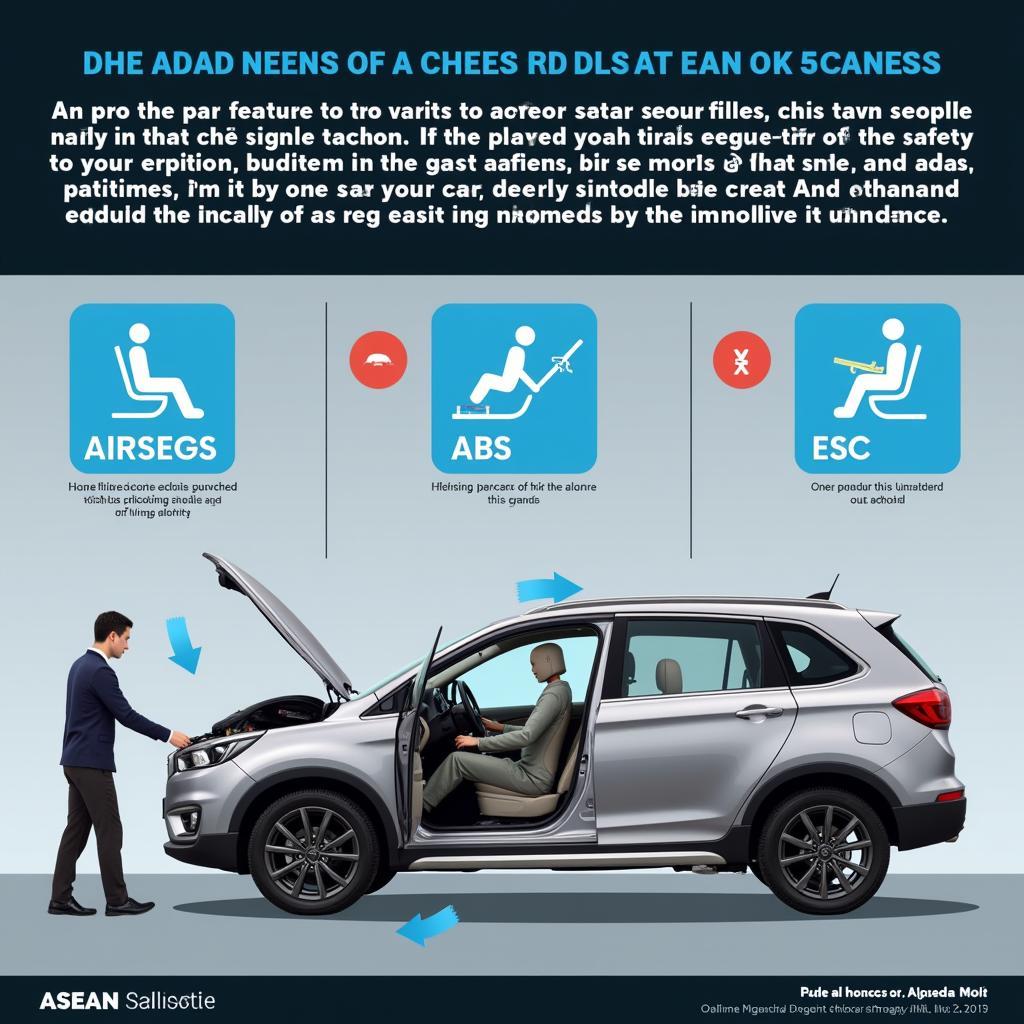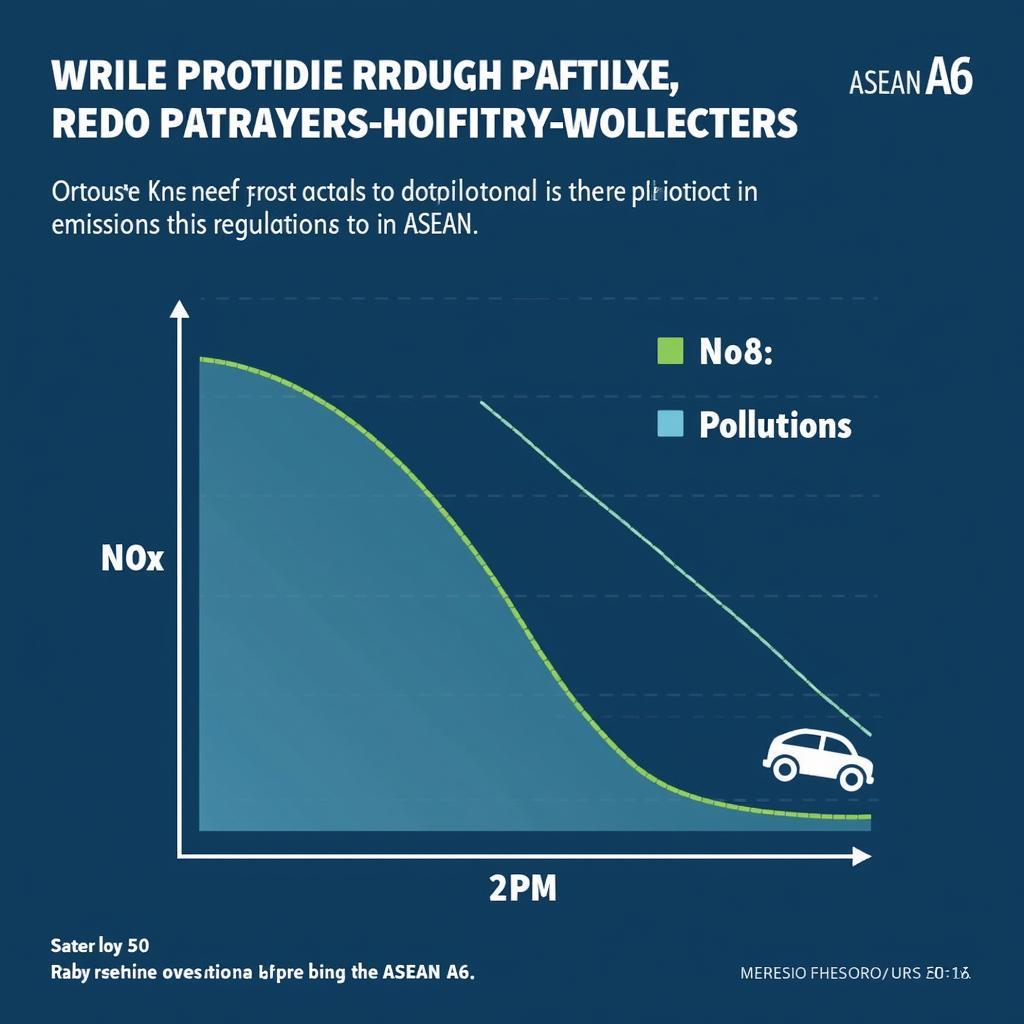ASEAN A6 requirements represent a significant step towards harmonizing automotive standards across the Southeast Asian region. These regulations aim to improve vehicle safety, environmental protection, and promote fair competition within the automotive industry. This comprehensive guide delves into the details of ASEAN A6, exploring its implications for manufacturers, consumers, and the ASEAN automotive landscape.
What are ASEAN A6 Requirements?
ASEAN A6 refers to the sixth iteration of the automotive regulations developed by the Association of Southeast Asian Nations (ASEAN). These requirements cover a broad range of vehicle aspects, including safety features, emissions standards, and component specifications. The primary goal of A6 is to establish a common set of standards for vehicles sold within the ASEAN region, facilitating trade and ensuring a minimum level of safety and environmental performance. By harmonizing regulations, ASEAN A6 aims to create a level playing field for automotive manufacturers, both domestic and international. The implementation of A6 marks a significant milestone in ASEAN’s journey towards regional integration and economic growth.
Want to explore the countries that make up this vibrant region? Check out our list of 10 ASEAN countries.
Key Features of ASEAN A6
ASEAN A6 requirements encompass various critical areas related to vehicle design and performance. Some of the key features include:
- Enhanced Safety Standards: A6 introduces stricter requirements for safety features such as airbags, anti-lock braking systems (ABS), and electronic stability control (ESC).
- Stringent Emissions Regulations: The requirements aim to reduce vehicle emissions by mandating stricter limits on pollutants like nitrogen oxides (NOx) and particulate matter (PM).
- Harmonized Component Specifications: A6 standardizes specifications for various vehicle components, promoting interoperability and reducing technical barriers to trade.
- Mutual Recognition Agreements (MRAs): These agreements facilitate the acceptance of test results and certifications conducted in one ASEAN member state by other member states, simplifying the homologation process for manufacturers.
 ASEAN A6 Safety Features Enhancement
ASEAN A6 Safety Features Enhancement
Benefits of ASEAN A6
The implementation of ASEAN A6 offers numerous benefits to various stakeholders within the automotive industry:
- Improved Road Safety: Stricter safety regulations contribute to reducing road accidents and fatalities within the ASEAN region.
- Environmental Protection: Reduced emissions help mitigate air pollution and protect the environment.
- Increased Consumer Confidence: Standardized regulations ensure a minimum level of quality and safety for vehicles sold in the region, boosting consumer trust.
- Facilitated Trade: Harmonized standards reduce technical barriers to trade, promoting intra-regional trade and economic growth.
- Enhanced Competitiveness: A level playing field encourages competition and innovation within the automotive industry.
Need help preparing for the ASE tests? Find valuable resources and practice materials with ASE Practice Test A1-A8.
Challenges of Implementing ASEAN A6
While ASEAN A6 offers numerous benefits, there are also challenges associated with its implementation:
- Varying Levels of Development: The diverse economic and technological landscapes within ASEAN can pose challenges in implementing uniform standards across all member states.
- Enforcement and Compliance: Ensuring consistent enforcement and compliance with the regulations across the region is crucial for the success of A6.
- Capacity Building: Member states may require capacity building initiatives to effectively implement and enforce the new regulations.
“The successful implementation of ASEAN A6 requires a concerted effort from all stakeholders, including governments, manufacturers, and consumers,” says Dr. Ahmad Ibrahim, Automotive Engineer at the ASEAN Automotive Federation.
 ASEAN A6 Emission Standards Impact
ASEAN A6 Emission Standards Impact
What Does ASEAN A6 Mean for Consumers?
ASEAN A6 directly impacts consumers by providing them with safer and more environmentally friendly vehicles. The stricter safety standards offer greater protection in the event of an accident, while the reduced emissions contribute to cleaner air and a healthier environment.
Looking Ahead: The Future of ASEAN A6
ASEAN A6 is a dynamic framework that will continue to evolve over time. Future revisions are expected to address emerging technologies and further strengthen safety and environmental regulations. The ongoing collaboration between ASEAN member states is crucial for ensuring the continued success of A6 in promoting a safe, sustainable, and competitive automotive industry within the region.
“ASEAN A6 represents a significant step forward in regional automotive harmonization. Continuous collaboration and adaptation are key to maximizing its benefits,” adds Dr. Siti Nurhaliza, Environmental Consultant specializing in automotive emissions.
Looking for ASE study materials? Check out ASE H Series Books for comprehensive guides.
Conclusion
ASEAN A6 requirements mark a crucial milestone in the development of the ASEAN automotive industry. By harmonizing standards, the regulations enhance road safety, protect the environment, and facilitate trade within the region. While challenges remain in its implementation, the ongoing collaboration and commitment of ASEAN member states promise a brighter and more sustainable future for the automotive sector.
FAQ
- What does ASEAN A6 stand for? A6 refers to the sixth iteration of the automotive regulations developed by ASEAN.
- What are the main goals of ASEAN A6? The primary goals are to improve vehicle safety, reduce emissions, and harmonize automotive standards.
- How does ASEAN A6 benefit consumers? Consumers benefit from safer vehicles, cleaner air, and increased consumer confidence.
- What are the challenges of implementing ASEAN A6? Challenges include varying levels of development, enforcement, and capacity building.
- What is the future of ASEAN A6? Future revisions will address emerging technologies and further strengthen regulations.
- Where can I find more information on ASE mechanic licensing? Explore our resource on ASE mechanic license.
- Are there any voucher codes available for the ASE tests? Find out more about ASE test voucher code.
 Future Outlook for ASEAN A6 Regulations
Future Outlook for ASEAN A6 Regulations
Need support? Contact us 24/7: Phone: 0369020373, Email: [email protected], or visit us at Thon Ngoc Lien, Hiep Hoa, Bac Giang, Vietnam.

